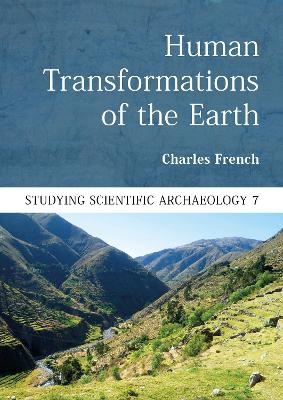
Human Transformations of the Earth
Oxbow Books (Verlag)
978-1-78925-920-9 (ISBN)
This book charts and explains how human activities have shaped and altered the development of soils in many parts of the world, taking advantage of five decades of soil analytical work in many archaeological landscapes from around the globe. The core of this volume describes and illustrates major transformations of soils and the processes involved in these that have occurred during the Holocene and how these relate to human activities as much as natural causes and trajectories of development, right up to the present day. This is done in two ways: first by examining a number of major processes and impacts on the landscape such as Holocene warming and the development of woodland, clearance and agricultural activities, and second by examining the trajectories of these changes in soil systems in different palaeo-environmental situations in several diverse parts of the world. The transformations identified are relevant to prevalent themes of today such as over-development and soil, land and environmental degradation and resilience. The studies articulated relate to Britain, southeastern Europe, the Mediterranean basin, East Africa, northern India and Peru in South America.
Charles French is Professor Emeritus of Geoarchaeology and Director of the McBurney Laboratory for Geoarchaeology in the Department of Archaeology, University of Cambridge. He specialises in the analysis and interpretation of buried landscapes using geomorphological and micromorphological techniques, and has been involved in many landscape projects around the world.
Preface
Acknowledgements
1. Introduction: Geoarchaeological approaches in archaeology
1.1 Endeavour
1.2 Development of the discipline of geoarchaeology as part of archaeological investigations
1.3 Importance to archaeology
2. Methodological approaches
2.1 Approaches in the field
2.1.1 Landscape to soil-scape
2.1.2 Soils and palaeosols
2.1.3 Formulating research designs
2.2 Basic characterisation techniques
2.2.1 Field prospection and soil/sediment profile description
2.2.2 pH and water quality
2.2.3 Loss-on ignition
2.2.4 Magnetic susceptibility
2.3 More involved techniques
2.3.1 Phosphorus (or phosphate) content
2.3.2 Multi-element analysis
2.3.3 Soil nutrient and fertility status
2.3.4 Micromorphology
2.3.5FTIR, XRF, EDAX, XRD and SEM
2.4 Establishing chronologies: Radiocarbon, OSL and Bayesian statistics
2.5 Scales of resolution
2.6 Soil nomenclature and classification
3. Soil transformation trajectories in temperate European landscapes
3.1 The beginnings to woodland soil development
3.2 Disturbance and degradation of woodland soils
3.3 Agricultural soil development
3.4 Woodland to pasture soils
3.5 Acidification and podzolisation
3.6 Erosion and colluviation
3.7 Alluviation, floodplains and waterlogging
3.8 Wetland soils
3.9 Cumulative soils
4. Soil transformation trajectories in southern Mediterranean landscape systems
4.1 Brown to red Mediterranean soils
4.2 Xeric calcitic soils and soil erosion
4.3 Erosion, alluviation and wadi development
5. Soil transformation trajectories in arid/semi-arid soil systems
5.1 Aridisols
5.2 Colluvial/alluvial systems
5.2.1 The Burj-Masadpur area of the Indus valley, northern India
5.2.2 The central Rio Puerco, New Mexico
5.2.3 The lower Ica valley, southern Peru
5.2.4 The Kerio-Embobut valleys in Marakwet, north-central Kenya
5.3 Terracing and irrigation
5.3.1 Aksum, northern Ethiopia
5.3.2 Konso, southern Ethiopia,
5.3.3 Engaruka, northern Tanzania
5.3.4 Sangayaico in the upper Ica valley, southern Peru
6. Timescales and longevity of soil processes
6.1 Timescales and longevity of soil properties
6.2 Soil horizonation and structural development
6.3 Within-soil illuviation and textural changes: stability, disturbance and erosion
7. Understanding long-term resilience in transformed soils
Bibliography
Appendices
1. Site gazeteer
| Erscheinungsdatum | 10.10.2022 |
|---|---|
| Zusatzinfo | B/W and colour |
| Verlagsort | Oxford |
| Sprache | englisch |
| Maße | 170 x 240 mm |
| Themenwelt | Geisteswissenschaften ► Archäologie |
| Geisteswissenschaften ► Geschichte ► Allgemeine Geschichte | |
| ISBN-10 | 1-78925-920-7 / 1789259207 |
| ISBN-13 | 978-1-78925-920-9 / 9781789259209 |
| Zustand | Neuware |
| Informationen gemäß Produktsicherheitsverordnung (GPSR) | |
| Haben Sie eine Frage zum Produkt? |
aus dem Bereich


